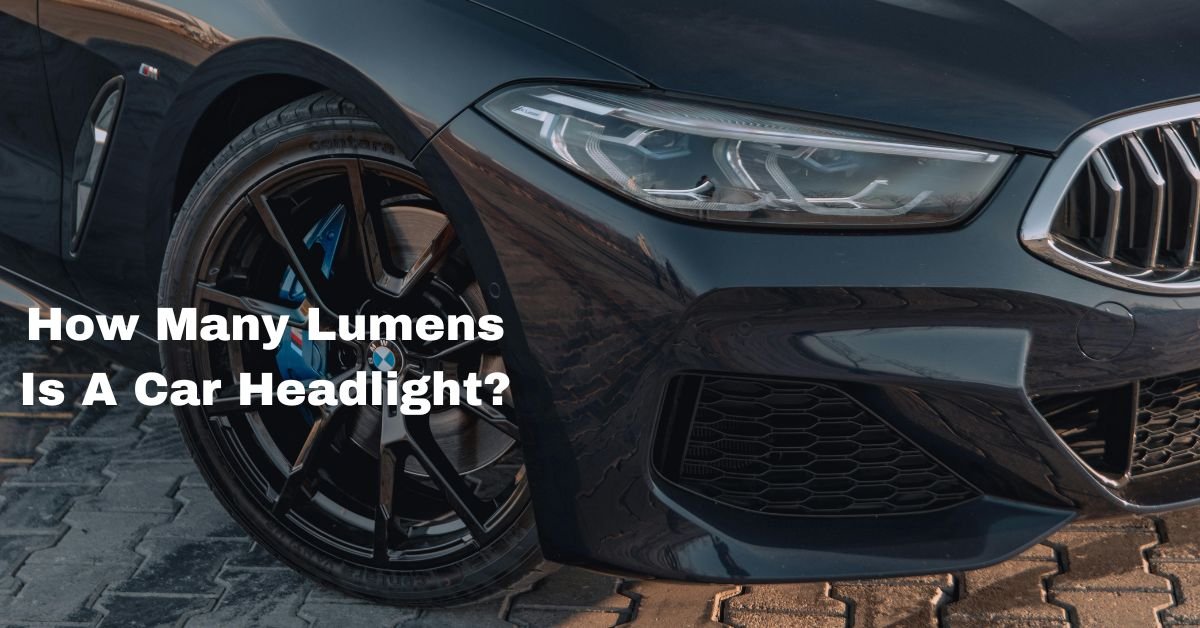When it comes to vehicle lighting, particularly car headlights, one important aspect often comes into question: how many lumens do car headlights emit? Whether you’re a car enthusiast, a driver interested in upgrading your headlights, or just curious about how your vehicle illuminates the road, understanding lumens can help you choose the right lighting for your car.
How Many Lumens in a Car Headlight? Understanding Light Output in Your Vehicle
1. What Are Lumens?
Before diving into how many lumens a car headlight has, it’s essential to understand what lumens are. Lumens are a unit of measurement used to quantify the total amount of visible light emitted by a source. In simple terms, lumens tell you how bright a light is. The human eye perceives light as being brighter when the lumen count is larger.
In the context of car headlights, lumens are crucial because they indicate how much light is projected onto the road, affecting how well you can see at night or in poor visibility conditions. The brightness of headlights directly impacts your safety, as well as the safety of others on the road.
2. Typical Lumen Output for Car Headlights
The lumen output of car headlights can vary based on the type of bulb and its design. Generally, car headlights fall into one of three categories: halogen, LED, and HID (High-Intensity Discharge). Each of these technologies has its own lumen output, and understanding the difference can help you choose the right option for your driving needs.
1. Halogen Headlights
Halogen headlights are the most common and traditional type of headlights found in many vehicles. These lights use a tungsten filament and a halogen gas to produce light. Halogen headlights are inexpensive, durable, and provide a warm, yellowish light.
On average, a standard halogen car headlight bulb emits between 700 to 1,200 lumens per bulb. While these headlights are effective for basic visibility, they are often not as bright or efficient as other types of headlights. However, because of their lower lumen output, they tend to be more affordable and easier to replace.
2. LED Headlights
LED headlights are becoming increasingly popular due to their energy efficiency, longevity, and superior brightness. LED bulbs use light-emitting diodes to produce light and are often more focused than halogen lights, resulting in a brighter and sharper beam.
LED headlights typically emit between 1,600 to 3,000 lumens per bulb, depending on the specific bulb and vehicle type. This is significantly brighter than halogen bulbs, which means they can provide better illumination of the road, improve visibility, and reduce the chances of accidents at night. Additionally, LEDs consume less power and have a much longer lifespan than halogen headlights.
3. HID Headlights
HID (High-Intensity Discharge) headlights, also known as Xenon headlights, use an electrical arc to generate light, which creates a very bright beam with a bluish tint. These headlights are often found in luxury or performance vehicles and are highly effective in providing illumination for long distances.
The lumen output for HID headlights can vary greatly depending on the specific type and vehicle. On average, HID headlights can emit anywhere from 3,000 to 4,500 lumens per bulb, making them one of the brightest options available. Due to their intense brightness, they provide exceptional road visibility and are favored by drivers who need superior lighting for nighttime driving or in areas with little ambient light.
Must Read: How Many Axles In A Car?

3. Why Does Lumen Output Matter?
The lumen output of a car’s headlights has a direct impact on your ability to see and be seen while driving. Here’s why lumen output matters:
- Improved Visibility: The brighter the headlights, the better you can see the road ahead, which is crucial for spotting obstacles, other vehicles, pedestrians, and road signs.
- Safety: In low-visibility conditions, such as fog, rain, or nighttime driving, higher-lumen headlights can make a significant difference in preventing accidents.
- Legal Requirements: Many regions have regulations governing the brightness of car headlights to prevent them from blinding other drivers. Overly bright headlights can be dangerous and might even violate local laws.
- Energy Efficiency: More lumens often mean more energy consumption, but LED and HID technologies offer high lumen output while consuming less energy than traditional halogen bulbs, helping save fuel and reduce environmental impact.
4. Can You Upgrade Your Car Headlights?
If you’re not satisfied with the brightness of your current headlights, it’s possible to upgrade to a higher-lumen option. Many vehicles can be retrofitted with LED or HID headlights, providing increased brightness and efficiency. However, it’s important to ensure that any upgrade complies with local laws and regulations regarding headlight brightness.
Conclusion
In summary, the number of lumens a car headlight emits can vary depending on the type of bulb you use. Halogen headlights emit around 700-1,200 lumens per bulb, LED headlights can emit 1,600 to 3,000 lumens, and HID headlights can provide 3,000 to 4,500 lumens. When selecting headlights, it’s essential to consider both the brightness you need for safe driving and the regulations in your area. Ultimately, choosing the right headlights can significantly enhance your driving experience, improve visibility, and most importantly, keep you and others safe on the road.
